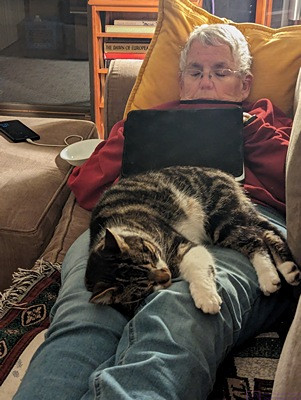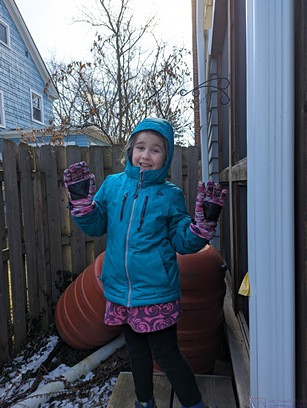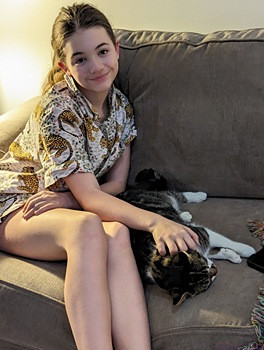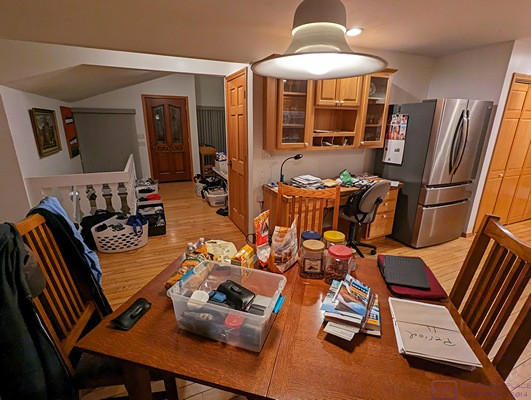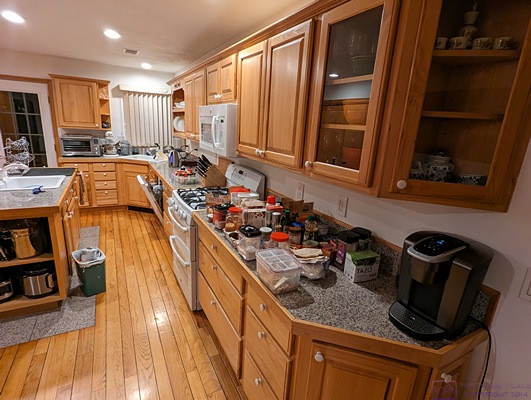NOTE: This is a long post with one (1) photo with caption, taken by Linda taken with a Google Pixel 6.
WEDNESDAY 31 July 2024 — Property maintenance, Laundry appliances, lunch out, and dogs
Keith arrived at 10 AM to mow the property. We paid him, and then left for Big George’s Appliance Store in Ann Arbor. Our daughter bought all her new kitchen appliances from Big George’s, and we bought our new refrigerator from them about a year ago. It’s a great appliance store, with knowledgeable salespeople, and a range of products (all good quality) and prices (all the way up to very high end). (They had an amazing French range. It had 4 burners [2 gas and 2 electric] and two ovens. It was made of steel and heavily insulated to retain heat. It was on sale for $36,000 US. List price was $65,000 US. It would take a fork lift to move it, and you would have to build a kitchen around it, but it was magnificent.) We admired the piece of kitchen sculpture, but were there to look for a new clothes washer and dryer for our laundry room.
In the last few months, I had seen some Youtube videos on heat-pump clothes dryers from technology channels that I trust (as much as I trust anything on Youtube), and I was intrigued by this “new” approach. Why was I intrigued? Well, you can get me out of engineering, but you can’t get the engineer out of me. Also, because I am the one in our family who does most of the laundry, this decision would fall to me more than to Linda, although she always has the final vote (veto, same letters, different meaning) when it comes to the money. But I also knew that it wasn’t really new; this technology has been used for years in Europe.
Heat-pump clothes dryers are much more energy efficient that resistive heating units, and easier on clothes as they operate at lower temperatures. They are as much de-humidifiers as they are heaters. Of particular interest to both of us, however, was that the heat-pump dryers are “ventless,” i.e., they do NOT take air from inside the house and vent it to the outside. Any air that is vented outside the house has to be made up with fresh air from outside the building. That air, in turn, has to be “conditioned” at most times of the year in our part of the country; heated in winter and cooled in summer. Not having to do that makes heat-pump dryers even more efficient. An added bonus to being ventless, is that we can move the dryer (and the washer) to the pantry in our kitchen if we ever need to. The lower portion of the pantry is already prepared for a utility tub and washer, but does NOT have a standard (240V/30A) dryer receptacle or vent to the outside. The pantry is on an inside wall, so venting to the outside would be more involved, and venting to the attic is a total non-starter.
I was specifically interested in the heat-pump dryers from Miele, a relatively higher-end German manufacturer, and their matching washing machines. I also knew from watching Youtube videos about high-end boats and superyachts, that Miele was THE manufacturer of choice for many of the kitchen and laundry appliances. Big Geroge’s had one pair on the floor for us to look at, which was all we needed as we just wanted to see them, put our hands on them, and discuss them with someone. They turned out to be mid-range models (Washer: WF660 WCS TDos, Dryer: TXI680WP Eco & Steam) that fit our needs and budget. We ordered the pair, along with a drawer base for each unit, delivery and installation, and haul-away of our current, 20-year-old washer and dryer. They also come with an excellent warranty.
The Miele units are “compact” in size, with load capacities of about half or less of the standard sizes made for the USA market. That will alter somewhat the way I do laundry, but not much as I have recently found myself doing more frequent but smaller loads anyway. They can be stacked, but I wanted them side-by-side. As they are front-loading units, the drawer bases will get the doors about 14” higher, and give me someplace to store laundry supplies which, given Miele’s proprietary TwinDos system, will be different from what I have been using. (Note: we do not have to use the TwinDos system; the washer accepts standard liquid and powder laundry detergents and additives.)
Miele products are warehoused in Chicago, Illinois, so they should be delivered and installed in our laundry room within the next two-to-three weeks. As a bonus, Miele had a $400 rebate on the pair, and our electric utility (DTE Energy) might also have a savings program for heat-pump dryers.
I suspect that the current dryer receptacle is a NEMA 14-30R, a 240/120 VAC, 30A, 4-prong device, but I have not verified that because the new heat-pump dryer will not use it anyway. A 14-30R is supplied by four conductors: 2 “hot” wires (L1 and L2), 1 neutral wire (N), and a ground wire (G). L1-to-L2 supplies 240VAC, while L1-to-N and L2-to-N provide 120VAC, but 180 degrees out of phase. The ground (G) wire is a safety feature.
The NEMA 14-30R receptacle has been required by the NEC (National Electrical Code) since 1996. Our house was built around 1976, however, so it’s possible it has the older (now obsolete) 10-30R receptacle, a 3-prong device that still supplies 240/120VAC, 30A power. It would be supplied by three conductors: L1 (hot), L2 (hot) and G/N; a separate N conductor is not used, and the ground wire is also used as a Neutral conductor. Ultimately, the N and G wires are always connected together (bonded) somewhere upstream in the system, but this configuration lacks the added safety of separate N and G conductors.
All of which is beside the point. The Miele heat-pump dryers (and perhaps those from other manufacturers) operate on a 120VAC/20A circuit with GFCI (Ground Fault Circuit Interrupter) protection. Thus, I needed to do some minor re-wiring in the laundry room before the units are delivered as the installer will want to plug it in and verify that it works. Not a big deal, but I had to get it done before the units show up.
Our main distribution panel is a 40 position Square D model, and all 40 positions have circuit breakers in them. A couple of the breakers are not in use, but others are “double” (piggyback) breakers. This is partly the result of changes in the wiring of the house over time and some of the existing circuit wires being too short to extend farther down into the panel box. The National Electrical Code (NEC) calls for appliances, such as the washer and dryer, to be on separate, dedicated, circuits with GFCI protection due to the laundry room being a “wet” location.
There is already a 120VAC duplex receptacle in the laundry room that the current washing machine is plugged into, but: 1) I do not know at this writing if it is a 20A circuit; 2) I suspect it is on a circuit with other receptacles, and; 3) I strongly suspect that the circuit is NOT GFCI protected. If the existing circuit for the washer is rated for 20A, I will probably install a GFCI duplex receptacle in place of the existing one, at least as a temporary, but safer, solution. I will run a new/dedicated 20A circuit for the heat-pump dryer and install a duplex GFCI receptacle as I do not want to get involved in installing a GFCI circuit breaker in our already crowded main distribution panel. I will comment on this further once the work is completed.
When we were done at Big George’s we drove to the Kerrytown part of Ann Arbor and found a place to park not too far from the Farmer’s Market. The Farmer’s Market operates on Wednesdays and Saturdays, so the parking lot was not available today. Our destination, however, was the Detroit Street Filling Station, and all-vegan restaurant on the other side of Detroit Street from the Market. An all-vegan restaurant is a real treat for us; we are spoiled for choice as we can literally order anything on the menu. We ordered a breaded/deep-fried oyster mushroom sandwich on a Hawaiian bun, and a Tempeh Reuben. We cut them in half and shared them. They were both good, but we agreed that the mushroom sandwich was something special.
On the way home, we stopped at the local Rural King store and bought two 40-pound bags each of whole corn, cracked corn, and oil sunflower seeds to feed the critters that frequent our property. Back home, I called Chuck S., our friend and fellow Prevost H3-40 converted coach owner. We had not chatted for a while, so we caught up briefly, but the main reason for my call was to set up a lunch get-together. We occasionally go to dinner with he and Barbara, but when we need to “talk shop” it works better if it’s just the two of us. We agreed on Friday, August 2, at Leo’s Coney Island in South Lyon. I then went to my office to continue working on e-mails and blog posts.
Around 17:00 I heard Linda calling me from the basement stairs landing. As I came up the stairs, I was “greeted” by two large Golden Retriever dogs staring in through the windows next to the front door. They were panting heavily and when we opened the front door, they were ready to come in. Cabela (the cat) was outside, but not knowing these dogs we did not let them in. Instead, I went out and walked around the house to our middle deck. They followed me willingly and, given that I was a stranger to them, were reasonably responsive to my “commands.” They did not have collars or tags, but it was obvious they were someone’s pets.
It was hot outside and they were panting heavily. Our heated water bowl was still outside (not plugged in, of course), so we filled it, and they drank it up. They were obviously mates, and very comfortable around people, but then Golden Retrievers tend to be that way. (We had one that lived to be 14-1/2 years old.) Once they were watered and we got them to lie down in a shady spot on the deck, Linda started calling neighbors to see if they knew anything about these animals.
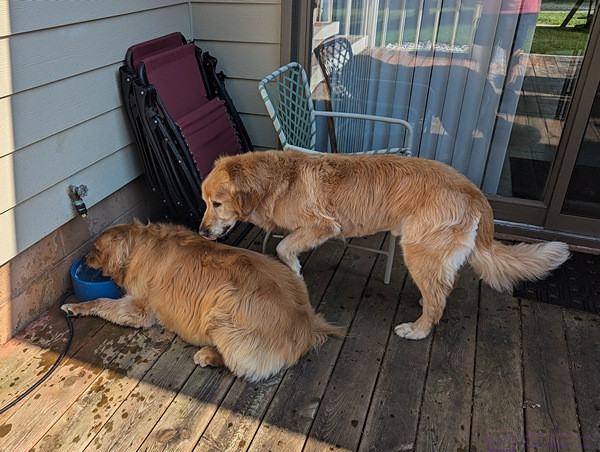
The two Golden Retriever dogs, quenching their thirst on a hot day. Their owner, new to our neighborhood, eventually found her way to our house and “retrieved” them, adding an interesting twist to the name of the breed.
While Linda made phone calls, I drove to the dog park located just at the start of our street. The owners were away, but the customers using the park assured me that no dogs had escaped from there. I then went to the old brick farm house across the street from the dog park, as we had seen Golden Retrievers there on several occasions (along with a menagerie of other animals). I talked to one of the workers, who was very nice, and it was quickly established that all of their dogs were accounted for. While I was there, Linda called to let me know that the owner had shown up and claimed the dogs. She was driving down our street looking for them and pulled into the driveway of our friends, Mike and Gail. Fortunately, Gail knew that we had them, and sent the owner in our direction.
It turned out that she (and her family) had just bought and moved into one of the houses on the court. Linda said she was pregnant, not very friendly, and just wanted to get her dogs and leave. Well, alrighty then; welcome to the neighborhood, and you’re welcome. We have absolutely no idea why the dogs chose our front porch as a place of refuge and possible assistance, but it was a good (lucky, fortuitous) choice on their part.
…



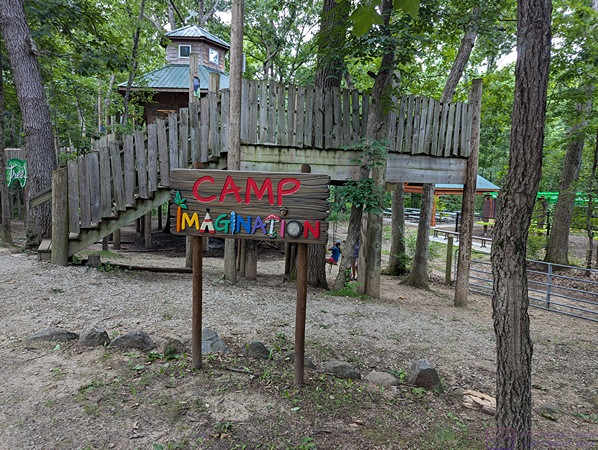
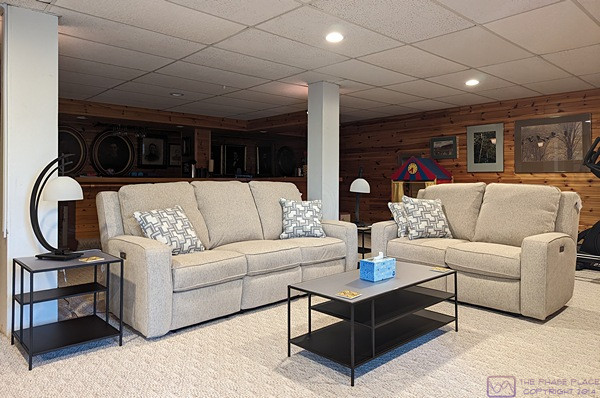
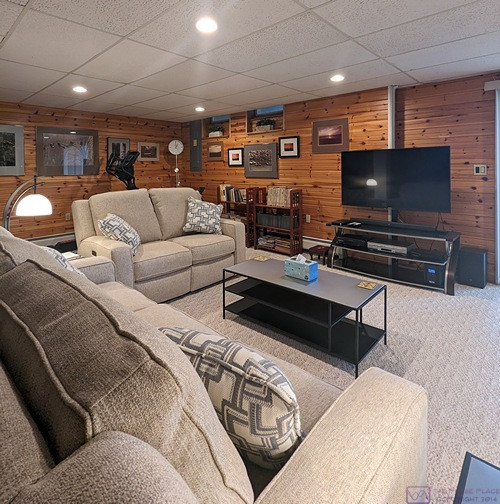


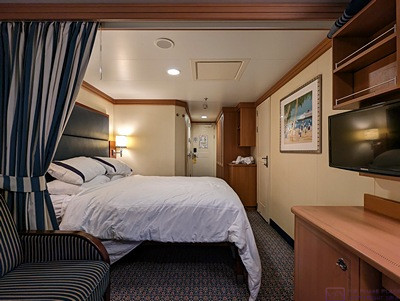
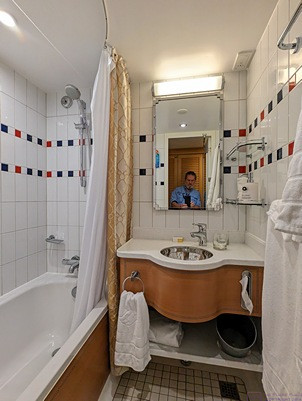

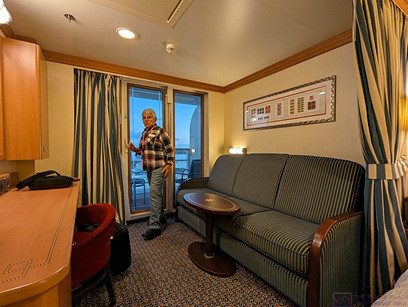
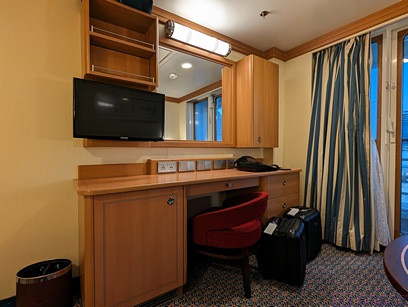

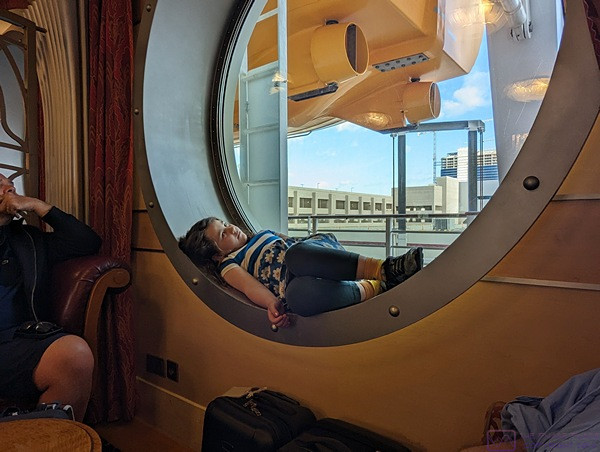
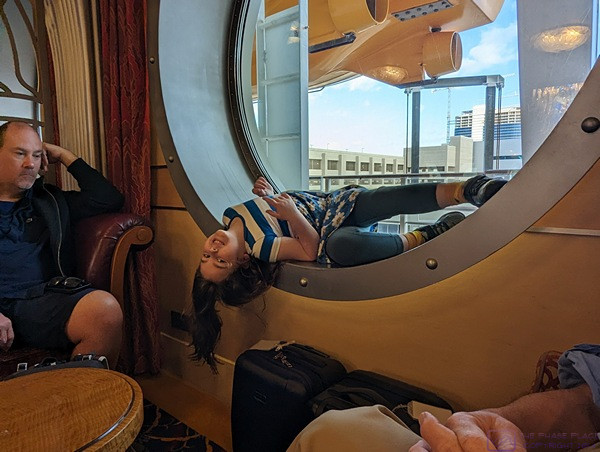
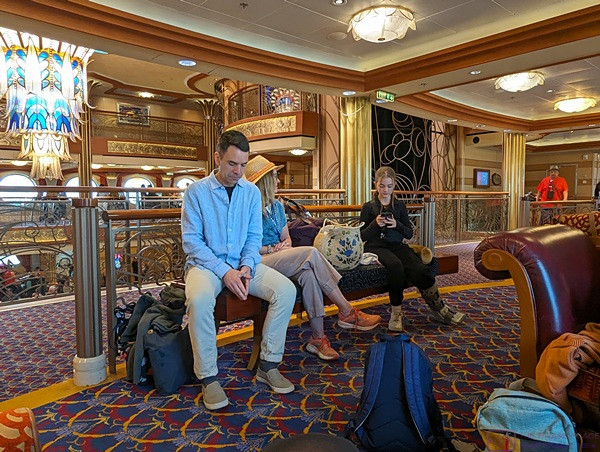
 Cheers!
Cheers!